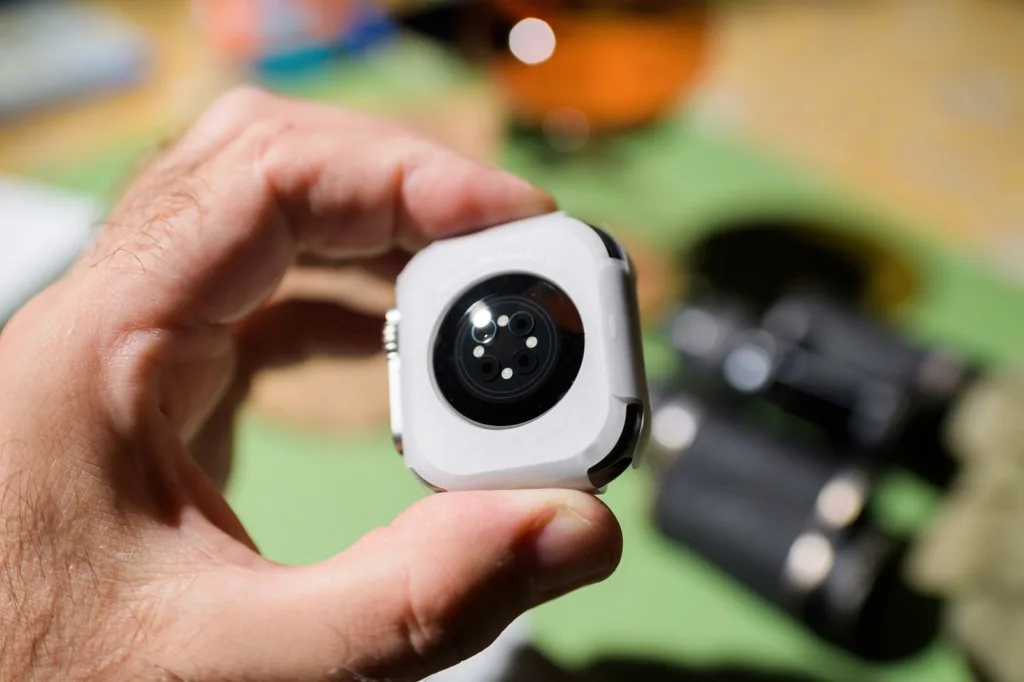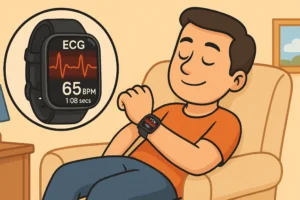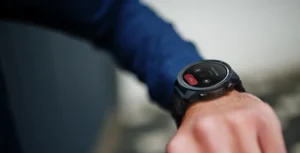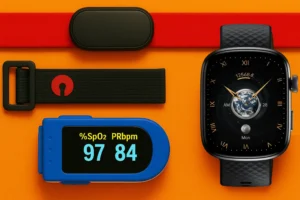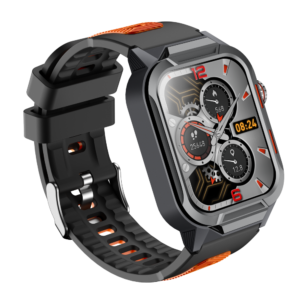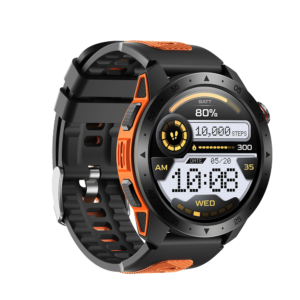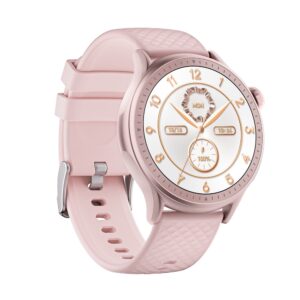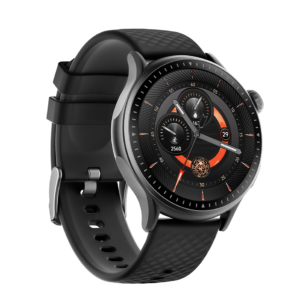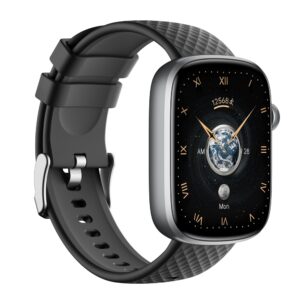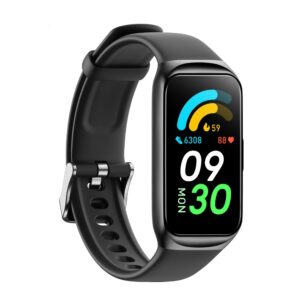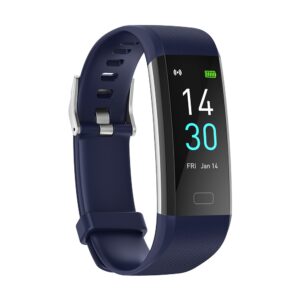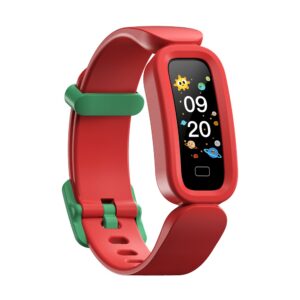Smart wearables, including fitness trackers, smart glasses, and smartwatches, have been getting much attention these years. As one of the most rapidly developing wearable technologies, smart watches offer a variety of advantages, such as activity tracking, sleep monitoring, health monitoring, notifications, incoming calls, emergency alerts, and more. However, most smart watch functions rely heavily on sensors and chips.
Components of A Smartwatch
Composed of various small parts, a smartwatch can be divided into two parts – a watch body and a strap – from appearance. Watch straps can be constructed from many different materials. The watch body comprises sensors, chips, batteries, touch screens, displays, and other components. Unlike traditional electronic watches, most functions in a smartwatch are brought by various electronic components integrated inside this smart gadget.
Although smartwatches are small in size, they can integrate many functional modules into one. These modules mainly include radio frequency boards, Bluetooth boards, WiFi boards, power management boards, and various sensors or chips.
The smartwatch sensor described in this article is also one of the essential components of the smart watch. With the help of various smart watch sensors, smart watches can realize health monitoring and exercise tracking. In addition, it can provide measurement functions such as heart rate, blood oxygen, activity records, and sleep quality. This article mainly lists the 7 most used sensor types in smart watches currently on the market, namely:
- Accelerometer
- Heart Rate Monitor
- SpO2 Sensor
- Skin Temperature Sensors
- ECG Sensor
- Gyroscope
- GPS
After reading this article, you’ll have a general idea of some smartwatch sensors and how they work.
Accelerometer
Accelerometers are commonly used to measure acceleration – the rate of change of an object’s velocity; roughly speaking, they can detect whether the user is moving. As a result, it is the most common sensor found in all types of smartwatches. For example, all Starmax smartwatch series are equipped with accelerometers to track users’ movements, such as S5, S90 (kids watch), and GTS6.
The most typical feature of an accelerometer in a smartwatch is motion tracking. Taking the Starmax GTS6 as an example, the accelerometer inside Starmax GTS6 can measure the user’s activity levels when running or jogging. Based on these measurements, it can count steps and thus calculate distance, calories, and other data.
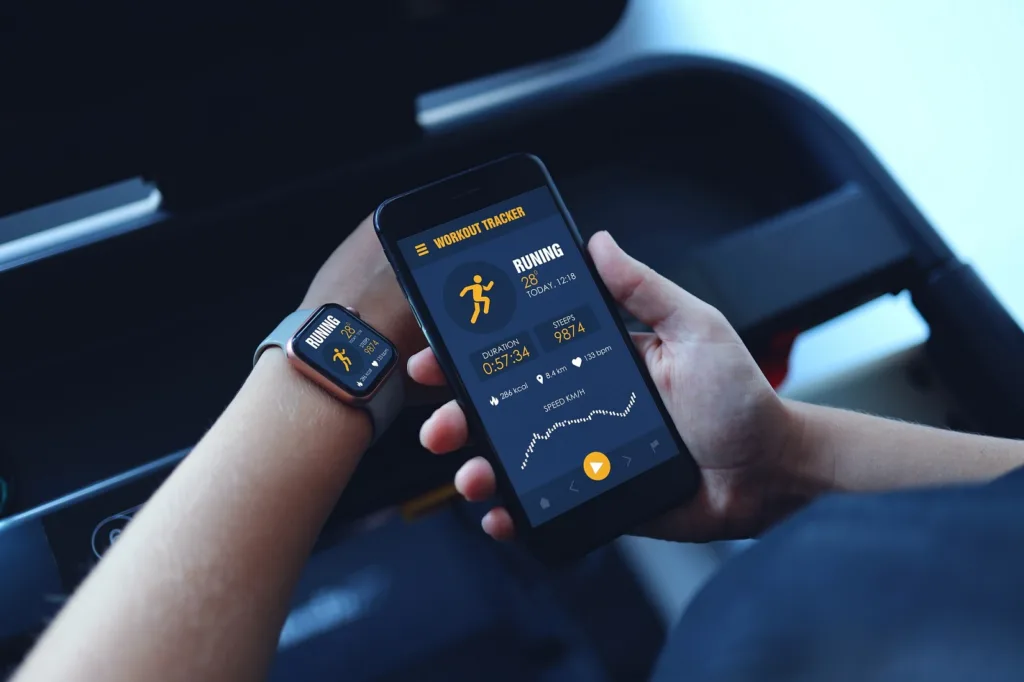
Since the accelerometer can be used to tell the device’s orientation relative to the Earth’s gravity, it is possible to correctly orient the smartwatch display by determining the upward direction. Most smartwatches from Starmax adopt this principle by raising the user’s wrist to wake the smartwatch display.
Heart Rate Monitor
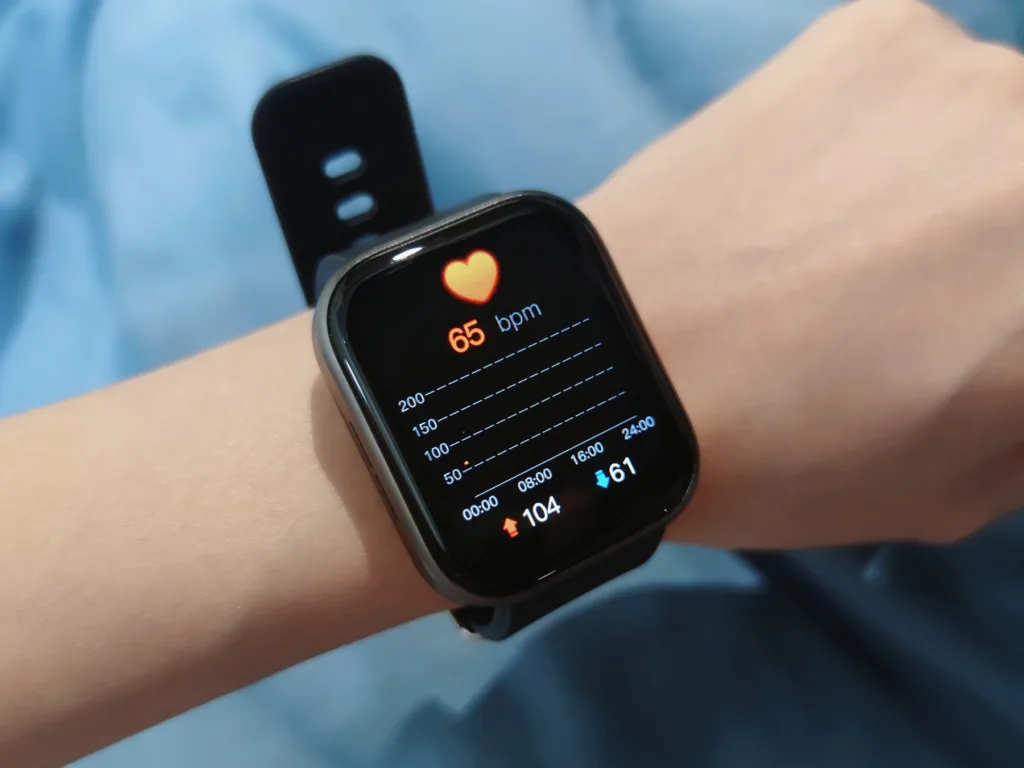
A heart rate monitor (HRM), or heart rate sensor, is designed to detect and measure your heart rate and pulse. Nowadays, most smartwatches have this type of sensor built to achieve heart rate detection features. The GTS4 developed by Starmax is also equipped with a heart rate sensor that uses photoplethysmography (PPG) for blood flow detection to measure the user’s heart rate and pulse.
The heart is a vital organ responsible for blood transport in the human body. A healthy heart will deliver the right amount of blood to all body parts at an appropriate speed. So changes in the volume of blood flowing are closely related to heart rate. The heart rate sensors on most smartwatches use this principle to measure the user’s heart rate and pulse by detecting the blood flow at the wrist.
PPG (photoplethysmography) is the most widely used technology for heart-rate detection. It is a non-invasive detection method that uses photoelectric means to detect changes in blood volume. You can find PPG heart rate sensors in all Starmax smartwatch series.
From the spectroscopy perspective, red and green are complementary colors, so theoretically, red blood will absorb green light. Therefore, the PPG heart rate sensor is one of the effective sensors that can detect heart rate and pulse by tracking the change of reflected green light strength.
The PPG sensor in a smartwatch is usually composed of an LED light source and an optical detector. The LED light source will first shine green light onto the user’s wrist, and then the optical sensor detects the received reflected light and counted the amount of it. The skin on the wrist reflects more green light when there are more red blood cells in the blood vessels. Therefore, by tracking changes in the concentration of red blood cells in blood vessels, smart watches can realize the function of heart rate detection.
Changes in heart rate are closely related to physical health, and too fast or too slow heart rate may be related to the disease. The regular heart rate of an adult in a quiet, awake state should be 60-100 beats per minute. By observing changes in heart rate through smart watches, we can discover potential health changes in the body in time.
SpO2 Sensor
SpO2 sensors, also known as blood oxygen saturation sensors, measure the oxygen saturation level by detecting the amount of oxygen-carrying hemoglobin in the blood. Monitoring SpO2 levels with a smart watch is very convenient these days with the help of SpO2 sensors.
SpO2 sensors use two different wavelengths of light – usually red and infrared – to shine on the skin to measure the oxygen saturation level in the blood. Oxygenated hemoglobin can absorb more infrared light and less red light. In contrast, deoxygenated hemoglobin absorbs higher amounts of red light than infrared.
Therefore, by calculating the ratio of these two kinds of light passing through the blood, the result of blood oxygen saturation level can be displayed in percentage, known as SpO2. Subjects with SpO2 readings of 95% or above were considered to be in good health.
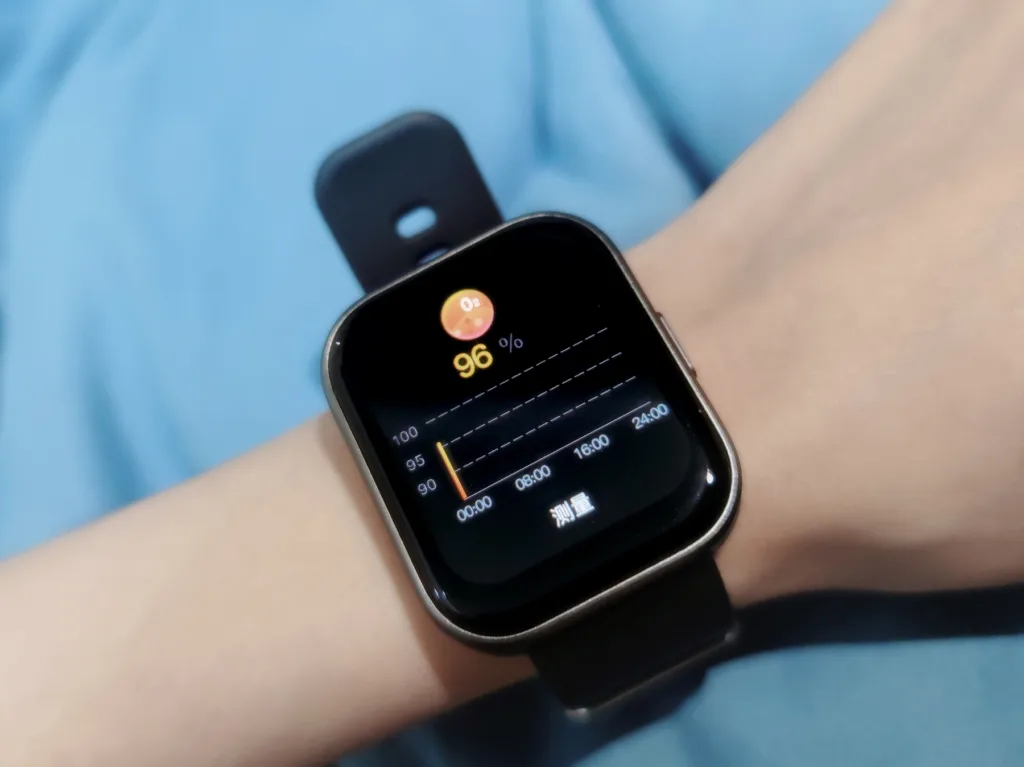
SpO2 sensors in smartwatches typically monitor blood oxygen levels, or oxygen saturation, by measuring how efficiently oxygen is delivered to the wrist. With a smartwatch equipped with a SpO2 sensor, the wearer can easily track their blood oxygen levels to detect potential abnormalities in their health.
The information reflected in blood oxygen saturation levels is critical to changes in the physical condition. Therefore, it can be used to detect respiratory diseases, including chronic obstructive pulmonary disease and sleep apnea. For example, oxygen saturation levels may drop significantly when the user is in a deep sleep or due to unhealthy lifestyle habits such as smoking or drinking alcohol.
Skin Temperature Sensors
Skin temperature sensors measure thermal energy emitting from the surface of a person’s skin. This sensor can detect the user’s body temperature and, in turn, helps monitor their health status. Various factors, such as environment, physical activity, health problems, etc., can cause changes in body temperature.
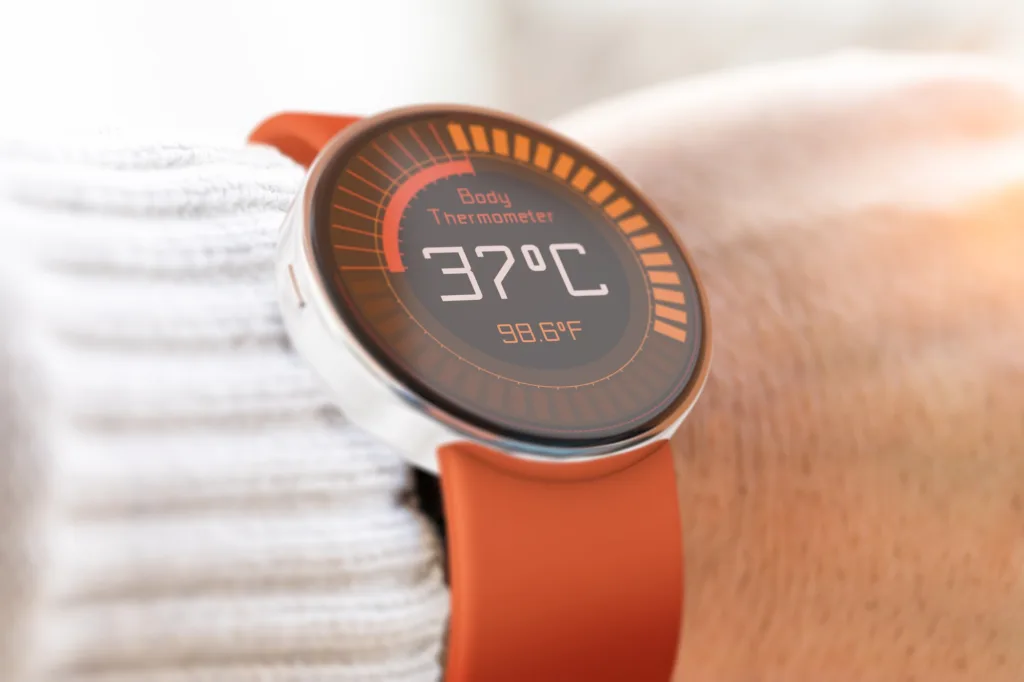
Smartwatches with skin temperature sensors can track subtle changes in skin temperature over time by keeping an eye on users’ body temperatures. It can then help detect potential illnesses early, as abnormal body temperature can be an early sign of physical illness.
Starmax’s hot-selling smart bracelet – S5 Fitness Tracker is also equipped with a skin temperature sensor to detect body temperature conveniently. And smartwatches like the Apple Watch Series 8, their skin temperature sensors can even support women’s period tracking and fertility prediction.
ECG Sensor
Electrocardiogram (ECG or EKG) is an effective medical test used to measure the heart’s electrical activity. This medical test requires an ECG sensor to capture and record the tiny electrical signals the heartbeat produces. The graph showing the heart’s electrical activity, called ECG trace or EKG trace, helps assess the user’s heart activity.
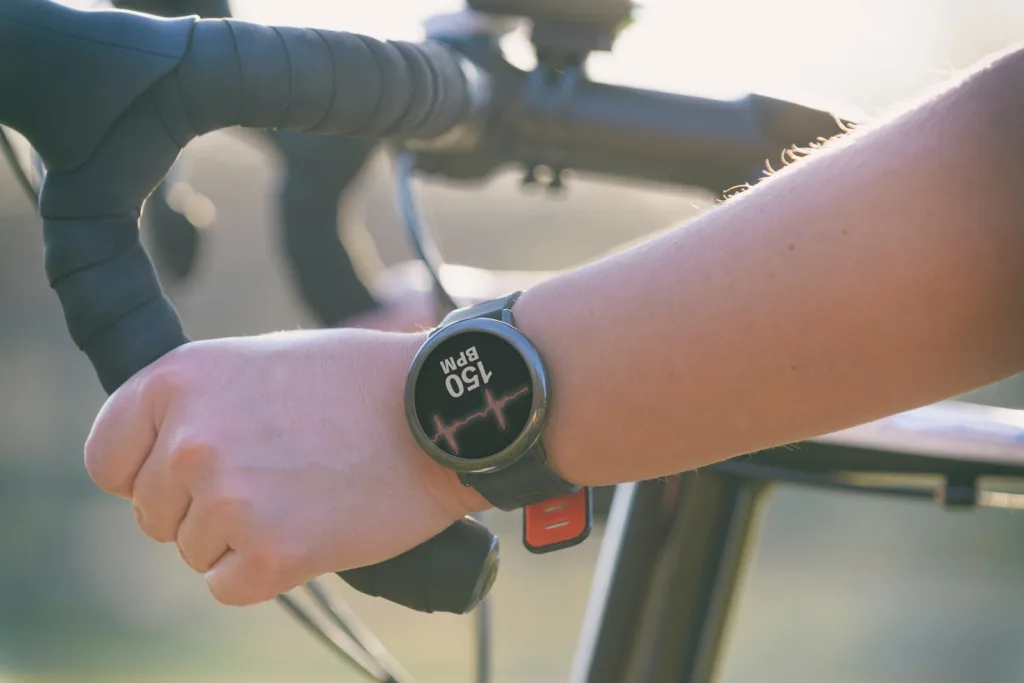
Smartwatches with electrocardiogram capabilities can help detect heartbeat conditions, such as atrial fibrillation and other irregularities, by precisely measuring the electrical signal of heart muscle contraction and calculating the time between each heartbeat. Featuring a medical-grade ECG and an oximeter that measures SpO2, the Withings ScanWatch is an excellent example of a modern smartwatch with advanced health monitoring capabilities.
When an ECG sensor works in tandem with other sensors, such as a heart rate sensor, it can detect and track changes in heart rhythms that may indicate a potential health issue. Smartwatches equipped with these sensors can monitor users’ hearts continuously and alert them if any irregularities arise.
Gyroscope

Gyroscopes and accelerometers are both sensors used to measure the movement of an object, but they work differently. Gyroscopes are used primarily to monitor the angle of an object to capture its angular velocity and direction changes. Some smartwatch makers even combine accelerometers and gyroscopes for triangulation to get a more accurate orientation of objects.
GPS
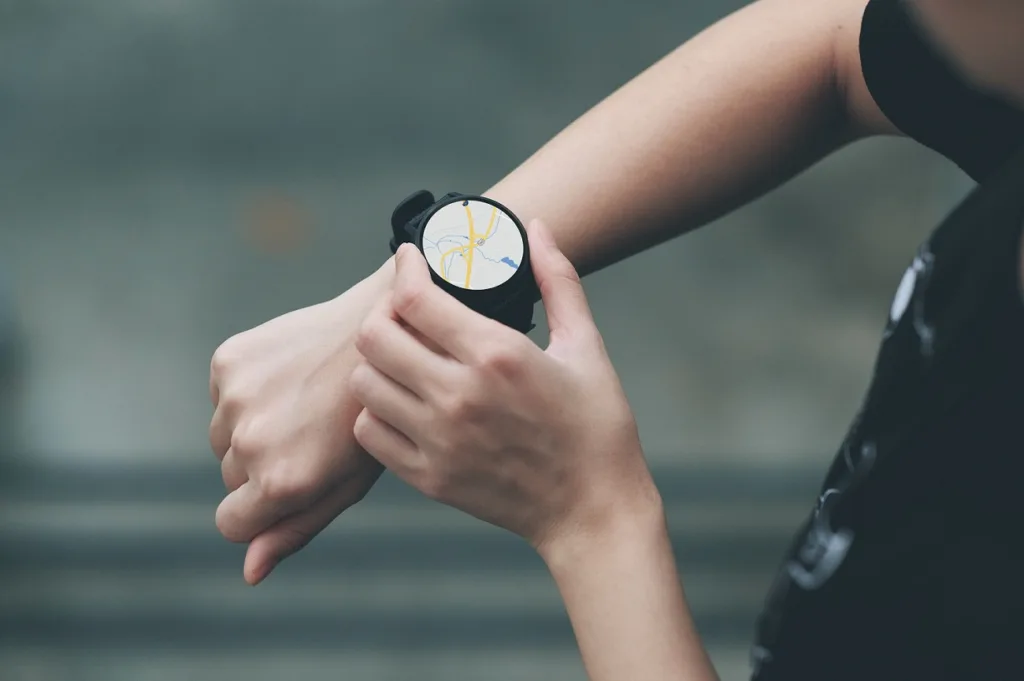
Global Positioning System (GPS), another popular feature in high-end smartwatches, uses satellite signals to identify a device’s exact location and track its movement over time. As a result, it enables more accurate step counts. In addition, it can get a more detailed picture of your daily activity levels (for example, mapping out proper running and cycling routes). However, GPS smart watches have relatively high requirements for signal reception, so the price is relatively high. Real-time locating also means less battery life for GPS smartwatches.
Conclusion
In conclusion, smartwatches are potent tools for effectively monitoring our physical well-being through various sensors, including the 7 sensors mentioned in this article. Furthermore, smartwatch technology will continue to evolve with advances in sensors, semiconductors, and other components.
By effectively combining these various smartwatch sensors and parts, we can open up a world of infinite possibilities with our smartwatch devices. With the combination of innovation and practicality in smartwatch design, smart watches will significantly impact our lifestyle in the coming years.
If you have any ideas about smartwatch design and manufacturing, you can directly contact the Starmax team. We can provide you with professional solutions.

